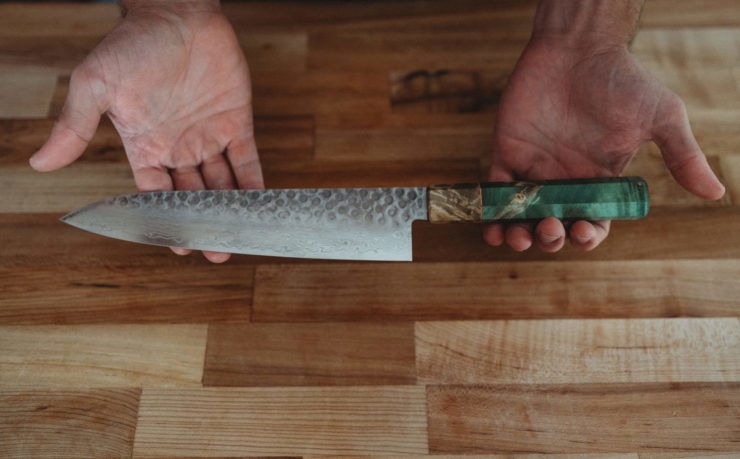We recently tried Oishya’s Sakai Kyuba Gyuto as part of our hands-on trials of more than a dozen Japanese knives in the Test Kitchen.
Right from the start, it was clear that this Oishya chef’s knife was among the most beautiful and unique in the test collection. But the price tag was significantly higher than almost every other option.
Over 6 months, we put this knife to the test in an effort to uncover – is it really worth it?
In this article, I’ll share what we learned about this knife, how we tested it, and how I’d think about this purchase after extensive hands-on time with the product.
What we like
- Exceptionally unique look, handmade feel, and a great story.
- The balance is set forward over the blade, making for easier maneuvering and chopping in a pinch grip.
- High attention to detail in the design of the blade, handle and how it’s packaged.
What We don’t
- This is art, and art isn’t cheap.
- The handle shape and forward-set balance makes it less ergonomic if you prefer a handle grip.
In This Article
First Impressions
A huge selling point of the Sakai Kyuba Gyuto was the power of its first impression. Not just for the person unboxing this knife, which I had the honor of doing, but for every person that walked into the Test Kitchen and beheld it for the first time.
Every aspect of the product and packaging was put together with incredible attention to detail. The whole assembly is incredibly unique.
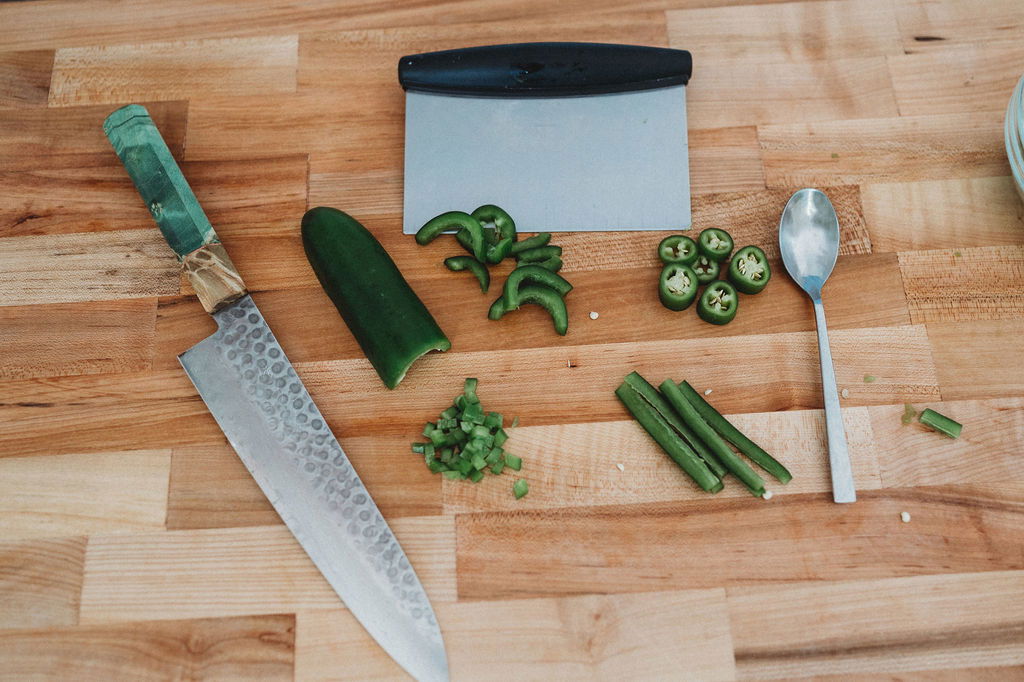
Does this mean that it chops better than the next knife? Not necessarily.
But it was always the story that guests wanted to know about. Although several blades performed similarly to this Oishya knife, none proved to be as conversation-worthy.
Although not everyone in our Test Kitchen agreed, I believe there is extra value in a tool that tells a story about where it came from. No knife we tested had more unique character than Oishya.
Size & Shape
Among all the Japanese chef knives we tested, the Sakai Kyuba gyuto had the greatest overall length. Even so, we found this knife was easier to maneuver than other blades that were an inch (or more) shorter. A big reason why is that this was also the lightest knife we tested.
The shape of this gyuto resembles that of a French Chef’s knife, meaning the cutting edge curves slightly toward the tip of the knife. This proved to be incredibly helpful for detail work, like de-stringing celery.
Whereas traditional Japanese knife shapes are designed to support a push and pull (or up and down) cutting motion, this knife can also make a rocking cut. Just like you’d expect with a German blade. It’s a great fit for someone who likes the option of either cutting motion.
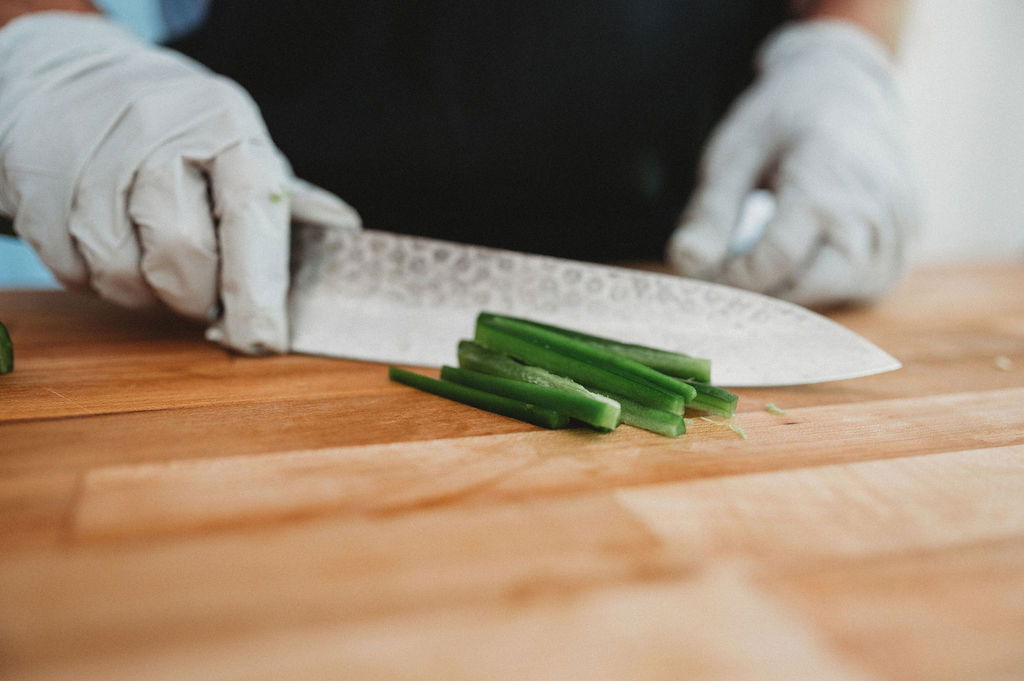
Handle
The Sakai Kyuba gyuto is equipped with an octagonal Wa-style handle made from ornate dyed wood. There are two components of the handle worth considering – function and fashion.
Let’s start with fashion.
Photos don’t effectively capture the beauty of craftsmanship on this handle. Every handle that Oishya produces is hand-dyed, meaning that each knife is totally unique in both wood grain and color pattern.
The material construction uses two types of European bog wood, one for the neck and the other for the handle body. A thin copper ring is sandwiched between the two during assembly, which is another unique detail you might miss at first glance.
The wood is 2,000-5,000 years old. I find it mind-boggling to think about how long ago the tree that made my knife was alive and kicking, and what the world might have been like at that moment. How did it last? Sunken in a bog, where the low-oxygen environment made sure it didn’t decompose.
Now let’s talk about function.
The size and symmetry of the 8-sided handle made it a comfortable grip for everybody on the team, even our left-handed tester.
Unlike the stainless steel and synthetic handles on some of the other knives we tested, we found that this real-wood handle stood up to wetness and food debris better without causing slips.
Some composite handles (like pakkawood) also worked well, but this real wood fitting was our overall favorite. Even so, a few testers did find a drawback with the handle that relates most specifically to our next topic: balance.

Balance
This knife was designed with a long blade, lightweight wooden handle, and no bolster. This means that the balance sits forward of the handle and just over the blade’s heel.
Is this good or bad? The answer to that question is highly subjective, and everyone on our team had a strong opinion one way or the other.
At the end of the day, the balance of this knife may be a make-or-break factor in determining if it’s the right fit for your kitchen.
Everyone on our team that prefers to handle a knife using a “pinch grip,” which is most of us, absolutely loved the forward balance. It made handling the knife feel balanced and effortless.
Those who preferred a “handle grip” did not agree. Since their technique was to clasp the knife behind its center of gravity, their experience felt more tiresome and even clumsy at times.
Again, there is no right or wrong grip. But I’d definitely recommend accounting for your grip style before making this purchase.
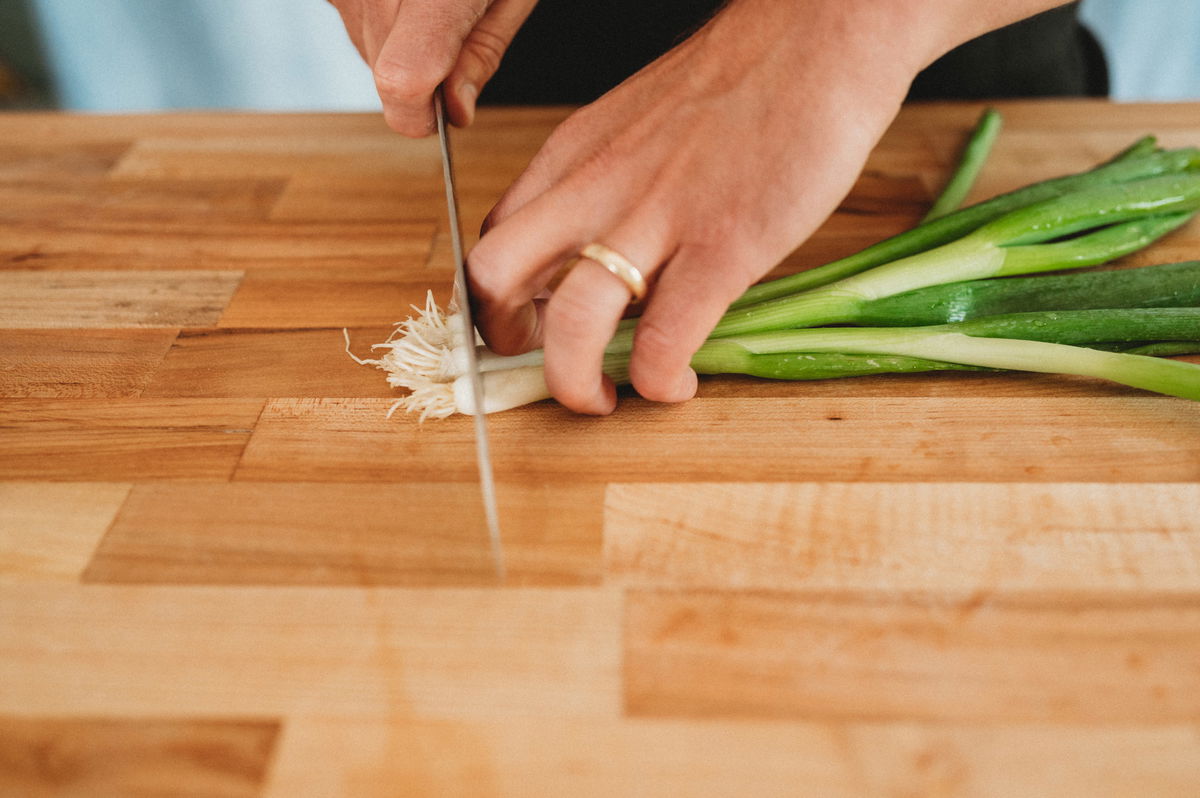
Sharpness
We accounted for a few measures of sharpness in our testing.
The first was sharpness “out of the box,” which is incredibly convenient but mostly a vanity metric. Of all the knives we tested, Oishya was the sharpest out of the box (Misen was the dullest). I’d consider this to be another testament to Oishya’s attention to detail.
Why is box sharpness not super important? Because any quality Japanese knife you buy will need sharpening a few times each year. Plan for it.
The 17-degree blade angle meant the Sakai Kyuba wasn’t the sharpest knife we tested. That honor went to the Miyabi Birchwood, which we also reviewed. But it was in the same ballpark.
How quickly did it dull after sharpening? Our Sakai Kyuba held an edge on par with any other knife we tested. Better than most.
We sharpened all of our test knives at 3-month intervals, both with a professional sharpener and using a whetstone in the Test Kitchen. The truth is that this knife could have held an edge for longer.
| Knife | Blade Angle | Cutting Edge Material | Rockwell Hardness Index |
|---|---|---|---|
| Shun Classic | 16 | VG-Max | 60 |
| Miyabi Birchwood | 9.5-12 | MC63 | 63 |
| Oishya Sakai Kyuba | 17 | VG-10 | 62 |
| Zelite Infinity | 12 | AUS10 | 61 |
| Dalstrong Phantom | 13-15 | AUS8 | 58 |
| Misen | 15 | AUS8 | 58 |
Care
Our sharpener works at the local farmers market, an arrangement I’d recommend because you can pick up produce while your knives are tended to. The cost is usually $1-2 per inch of blade, or $16 in our case.
You can also learn how to use a whetstone, which costs about $20 and lasts forever. But it does take some practice. I’d recommend learning that skill on a good budget knife like the Victorinox Fibrox pro, so you’re not scratching up your show-piece knife in the process.
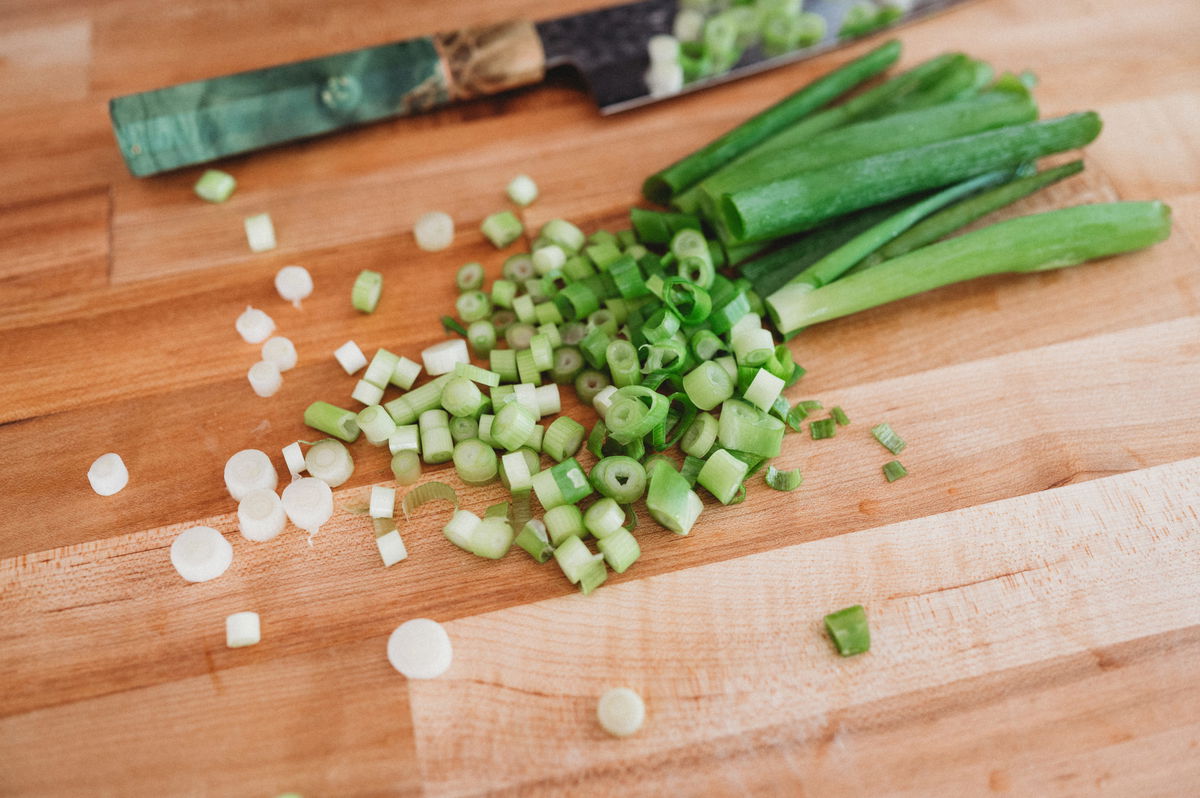
Construction
The Sakai Kyuba is a traditional Damascus-style blade, constructed by folding a piece of high-carbon steel inside layers of folded stainless steel.
Why does this matter? A few good reasons.
The core performance benefit of the Damascus method is that the bladesmith can use an exceptionally hard center layer, which protrudes at the cutting edge of the knife. Oishya uses Japanese VG-10 for the cutting edge, which has a Rockwell Hardness rating of 62.
The surrounding layers of stainless steel protect the knife from corrosion, so long as you keep the cutting edge clean and dry between uses.
As new layers are added the bladesmith hammers the knife exterior to compress them. This is what makes this knife thin and light. It also leaves incredible-looking hammer divets, presumably from the same smith that etched the Sakai Kyuba name into the blade.
There are 46 layers of Damascus folding on this knife, which is 50-100% less than most others we tested.
Does it protect the cutting edge just the same? Yes.
Does it still look beautiful? The folds in this knife are more distinct and beautiful than any other knife in our kitchen.
Price
You can pay a lot less for a great knife that will gracefully make all the cuts your kitchen requires. But, without traveling to Japan, you’d be hard-pressed to find a more affordable knife that is also a unique work of art.
If you’re looking for straight-up performance, and don’t mind having an identical blade to your foodie friends, then expect to pay around $150-200. I always recommend the Shun Classic as a great starting point.
But, if you want something unique. Something conversation-worthy. A work of art. Then $350+ is the norm, and the Sakai Kyuba gyuto is par for the course.
Unlike other “design-forward” brands, including Miyabi, this one feels like it came from humans, not a factory. Again, it’s the details that count. And Oishya was thoughtful in all of their decisions.
Final Thoughts
After 6 months in the Test Kitchen, several sharpenings, and a whole lot of food prep I can confidently say that Oishya’s Sakai Kyuba gyuto isn’t for everyone. The truth is that most people can’t afford it.
This knife isn’t cheap. But then again products that say something unique rarely are.
If you’re curating your kitchen to perform at a high level AND capture the imagination of everyone who walks through your doors this is a must pick. It would be challenging to find a knife in this price range that says more without traveling to Japan, or building it yourself.
The two caveats are that you should,
- Feel comfortable using a pinch grip to match the forward balance on this knife, and..
- Have a plan in mind for sharpening a few times each year.
After all, it’s probably not worth paying a premium for a knife if you don’t intend to keep it sharp!
